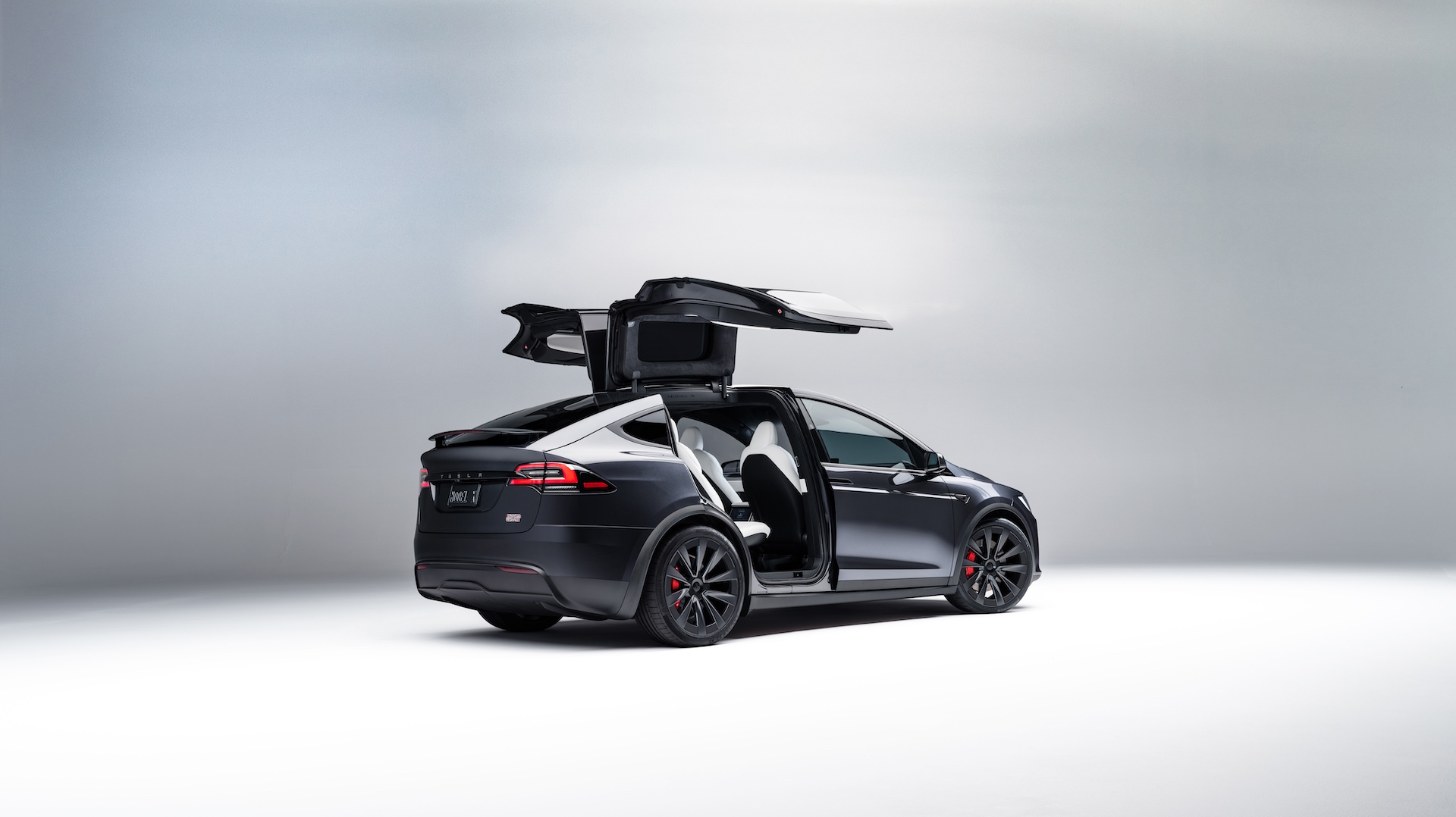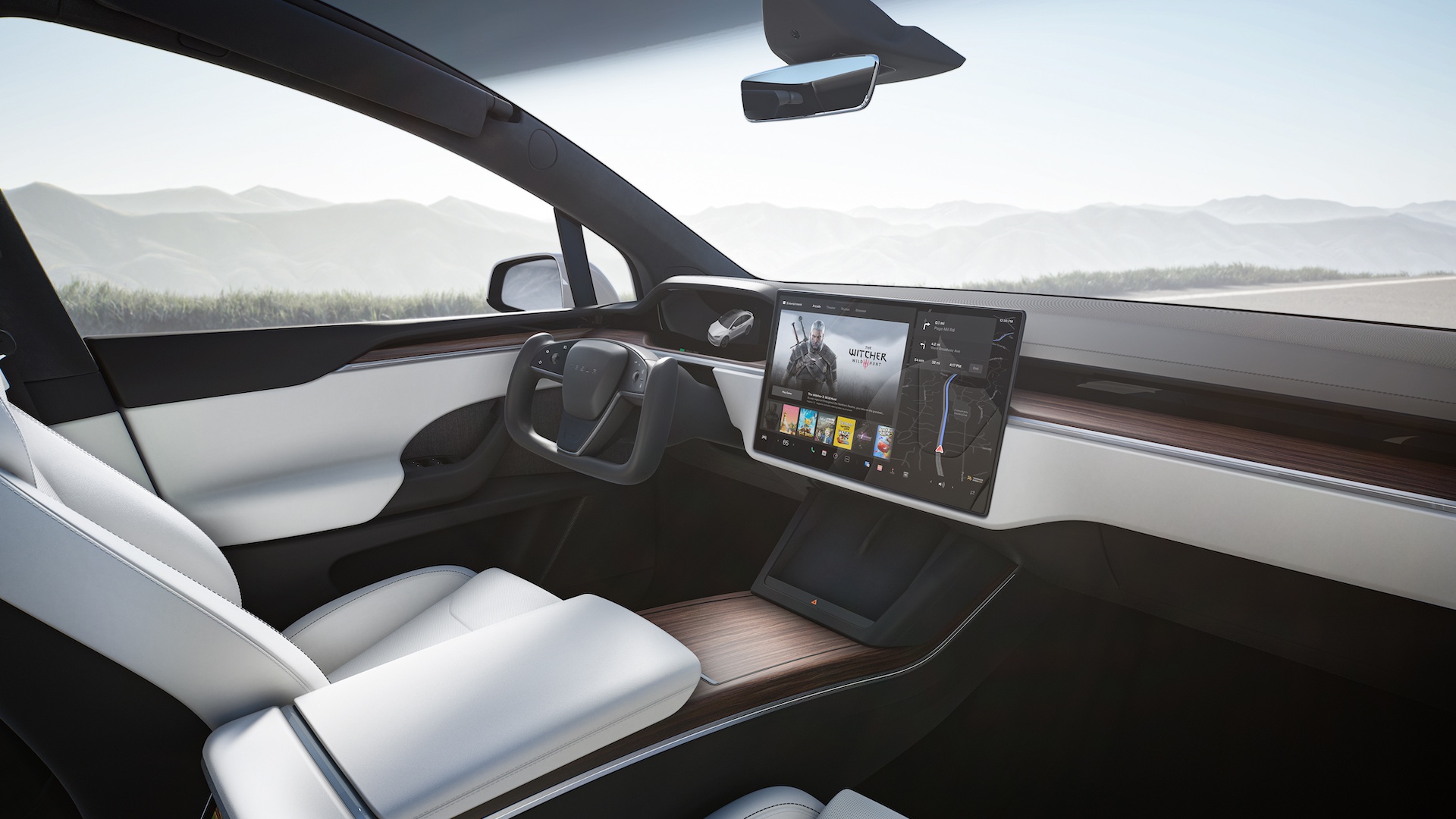Tesla EVs get a big Phone Key boost, but only if you're an iPhone user
Available on Model 3, Model X and Cybertruck for now

A new update to Tesla’s operating system (that's version 2024.2.3, software fans) has introduced support for Apple's Ultra Wideband (UWB) technology, which is in recent iPhones. This means improved Phone Key functionality, because many Tesla owners will no longer have to rely on the less precise, and less secure, Bluetooth connectivity to open their car.
According to 9to5Mac, the update was spotted by serial Tesla software blog Not a Tesla App, which pointed out that UWB technology means the vehicle and Phone Key can "communicate with greater accuracy to more responsively lock, unlock, and open Automatic Doors".
Apple began using UWB tech back in the iPhone 11, and recently introduced it to Apple Watch Ultra 2 and the latest Apple Watch Series 9, allowing its devices to more accurately communicate with one another.
In terms benefits, the tech allows for Precision Finding, which can guide an owner to a lost watch or smartphone with pinpoint accuracy. Previously, if a phone had slipped down the back of a sofa, Find my Phone would have only given an approximate whereabouts, but Apple Watch can now guide the owner via haptic feedback a series of chirps until they are mere inches away.
What does this mean for Tesla's electric vehicles? This same close approximation tech results in a much faster and more accurate response from the car, while providing added peace of mind that a Bluetooth signal isn’t going to be intercepted by would-be thieves.
According to Not a Tesla App, Tesla owners can dive into the settings of their Tesla app and upgrade the Phone Key menu to switch from Bluetooth to UWB. It requires an iPhone 11 or later and the Tesla app version 4.29.5 or later.
There’s no word on whether the same functionality can be replicated on Apple Watch Series 9 and Apple Watch Ultra 2 just yet, while only the latest generation Model 3 and 2023 Model X cars, as well as the Cybertruck, have the capability to run the new functionality.
Sign up for breaking news, reviews, opinion, top tech deals, and more.
But it's likely to be rolled out to more Tesla models in the near future and, hopefully, some of the latest Android phones eventually, as recent Google Pixel and Samsung Galaxy phones also have their own UWB chips.
UWB for the security win

Without getting too deep into the scientific intricacies of Bluetooth Low Energy (BLE) and Ultra Wideband technologies, the likelihood of BLE being subjected to jamming and relay (or 'man-in-the-middle attacks') is far greater due to the fact that it relies on signal strength, which allows attackers to amplify this using crude devices and eventually fool the vehicle into thinking the owner and digital key are nearby.
UWB, on the other hand, uses several frequency pulses, which are measured to see how long it takes for the signal to travel between the signal (the phone) and the receiver (the car). The person with the phone has to be much closer for the system to work, thus warding off any tech-savvy criminals.
In addition to this, it is possible to encrypt UWB technology to prevent what is known as 'preamble insertion attacks', further adding to security levels.
Tesla's willingness to work with Apple and its UWB technology is a boon for those customers who like to use a smartphone for everything, including keyless entry. It also forms a solid framework for future updates, which could include adding your Tesla key into Apple Wallet, as well as introducing more precise location accuracy for when you’ve misplaced your car in a busy parking lot.
You might also like

Leon has been navigating a world where automotive and tech collide for almost 20 years, reporting on everything from in-car entertainment to robotised manufacturing plants. Currently, EVs are the focus of his attentions, but give it a few years and it will be electric vertical take-off and landing craft. Outside of work hours, he can be found tinkering with distinctly analogue motorcycles, because electric motors are no replacement for an old Honda inline four.